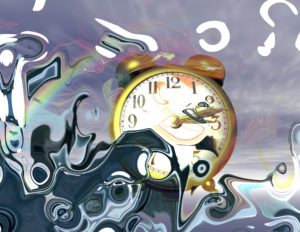Quick links, bringing you great articles on writing from all over the web.
By Janice Hardy, @Janice_Hardy
 Back in June, I caught that nasty flu that was going around and spent a few miserable weeks napping and watching a lot of TV. One of my distractions of choice was the show, Bones. It had been a long time since I’d seen the first few seasons, and while it was fun to re-watch them, one thing did annoy me.
Back in June, I caught that nasty flu that was going around and spent a few miserable weeks napping and watching a lot of TV. One of my distractions of choice was the show, Bones. It had been a long time since I’d seen the first few seasons, and while it was fun to re-watch them, one thing did annoy me.
The character Temperance “Bones” Brennan is a world-class forensic anthropologist who is very literal-minded and repeatedly says she doesn’t like psychology and doesn’t do motive.
Yet…
She’s a bestselling author who writes mysteries.
Writing is all about characters and why they do what they do. Motive is what’s driving every character to act—especially in a mystery.
Someone who doesn’t understand why people act and how emotional minds work would never be able to write great mysteries.
It’s a TV show, I get it, they wanted to make her famous and awesome on multiple fronts. And for all I know, her books are more procedural and less character, but that’s not how they’re described or referred to in the show itself.
One major aspect of the character, Bones, contradicted the core of who she is—and that bugged me every time they brought it up.

 by
by 
 I like unlikable characters, dammit! Always have, even before I was writing them myself, and they can always use a champion.
I like unlikable characters, dammit! Always have, even before I was writing them myself, and they can always use a champion. Impostor syndrome isn’t a new concept, it’s something most people will encounter during their life. For a writer, impostor syndrome manifests itself in our psyche, laying a veil of self-doubt over our thoughts and actions. We continually feel our writing is inadequate and rubbish, and that nothing we write will be good enough. Ever.
Impostor syndrome isn’t a new concept, it’s something most people will encounter during their life. For a writer, impostor syndrome manifests itself in our psyche, laying a veil of self-doubt over our thoughts and actions. We continually feel our writing is inadequate and rubbish, and that nothing we write will be good enough. Ever. by Jenny Bravo
by Jenny Bravo Back in June, I caught that nasty flu that was going around and spent a few miserable weeks napping and watching a lot of TV. One of my distractions of choice was the show,
Back in June, I caught that nasty flu that was going around and spent a few miserable weeks napping and watching a lot of TV. One of my distractions of choice was the show, 
 often feel as natural and effortless as laughter. Right after wondering why the book didn’t come with a warning label about drinking milk while reading, you might even imagine that writing comedic material is easy. The truth is that writing great, silly fiction is hard, but it’s a skill you can hone if you’re willing to put in the same kind of effort you’d put into writing great serious fiction. So here are seven serious tips for writing a silly novel.
often feel as natural and effortless as laughter. Right after wondering why the book didn’t come with a warning label about drinking milk while reading, you might even imagine that writing comedic material is easy. The truth is that writing great, silly fiction is hard, but it’s a skill you can hone if you’re willing to put in the same kind of effort you’d put into writing great serious fiction. So here are seven serious tips for writing a silly novel. I’ve often mentioned that I appreciate questions from readers (even though I can’t answer them all, especially with my health issues this year). Every question gives me ideas for potential blog posts, and today I’d like to thank Lee Green for the idea for this post (and Julie Sade for encouraging me to write it). *smile*I’ve run into the issue Lee mentions within my work as well, so I’m glad her question forced me to think deeper about the pros and cons. As with many things, we might answer one way at first glance but later discover a different angle that changes our opinion.
I’ve often mentioned that I appreciate questions from readers (even though I can’t answer them all, especially with my health issues this year). Every question gives me ideas for potential blog posts, and today I’d like to thank Lee Green for the idea for this post (and Julie Sade for encouraging me to write it). *smile*I’ve run into the issue Lee mentions within my work as well, so I’m glad her question forced me to think deeper about the pros and cons. As with many things, we might answer one way at first glance but later discover a different angle that changes our opinion. Would you like to create memorable characters? Of course you would!
Would you like to create memorable characters? Of course you would!

 Following up on
Following up on  A lot of focus gets put on the core conflict of a novel–the main problem the protagonist has to solve to win. It’s no wonder since that’s the whole point of the book, but sometimes, when we look too hard at the external problems, we miss out on opportunities to let the internal problems muck things up. This is especially true in a character-driven novel, since that inner journey is what’s driving the entire book.If you’ve been struggling with a plot, or you’re looking for ways to deepen an existing plot, try looking at how your protagonist’s internal conflict is driving her external actions.
A lot of focus gets put on the core conflict of a novel–the main problem the protagonist has to solve to win. It’s no wonder since that’s the whole point of the book, but sometimes, when we look too hard at the external problems, we miss out on opportunities to let the internal problems muck things up. This is especially true in a character-driven novel, since that inner journey is what’s driving the entire book.If you’ve been struggling with a plot, or you’re looking for ways to deepen an existing plot, try looking at how your protagonist’s internal conflict is driving her external actions.